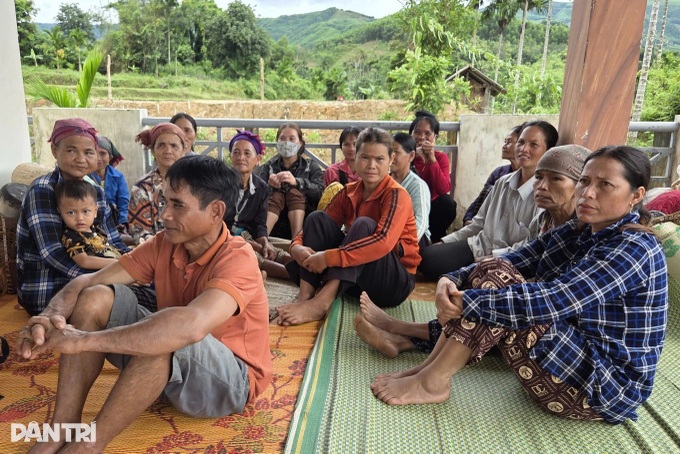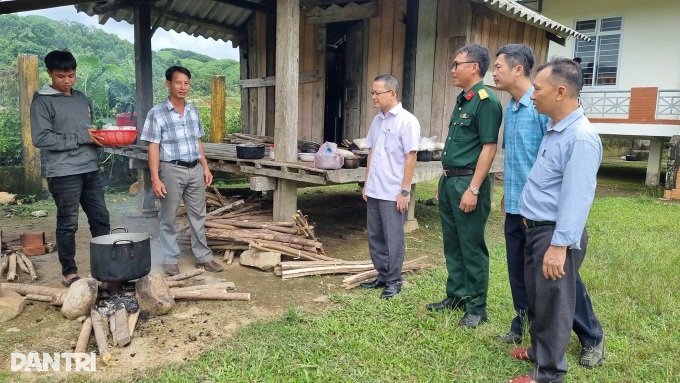
More than 200 residents in Ba Vinh Commune, Quang Ngai Province, are evacuated to the communal cultural house to avoid potential landslides on October 22 as Storm Fengshen nears central Vietnam.
Phan Van Chuong’s house lies at the foot of Go Oat Mountain, a place where fear rises every rainy season. “There’s a large crack near the top of the mountain that was discovered four years ago. Every time heavy rain comes, everyone in the village worries the mountain could collapse and bury our homes,” Chuong said.
Fearing that Fengshen may bring prolonged heavy rainfall, local authorities urged Chuong’s family and 60 other households to leave their homes and move to a safer location.
After some hesitation, Chuong and his family of four decided to evacuate to the Ba Vinh communal cultural house. Around 200 other villagers living at the mountain’s base followed suit.
At the shelter, many families brought clothes, rice, and instant noodles, enough to sustain them for several days.

Local authorities visit the residents at the evacuation area.
According to Phan Quang Duc, chairman of Ba Vinh Commune, local officials have identified two sites on Go Oat Mountain at high risk of landslides. “One area has a large underground water flow showing unusual activity, and another has a crack one metre deep and about 100 metres long running across the mountainside. Many large rocks are scattered around the slope, which could slide down and hit the residential area below if a landslide occurs,” Duc said.
Given the unpredictable developments of storm Fengshen, the local government has evacuated 61 households to safety, though officials say it is only a temporary measure. In the long term, Ba Vinh authorities hope the province will build a resettlement area to help residents of Ba Lang Hamlet stabilise their lives.
The Quang Ngai Meteorological and Hydrological Station has forecast that from October 22 to 27, the province will experience heavy rainfall due to storm Fengshen, with total precipitation reaching 200 to 350 millimetres, and in some areas exceeding 400 millimetres.
